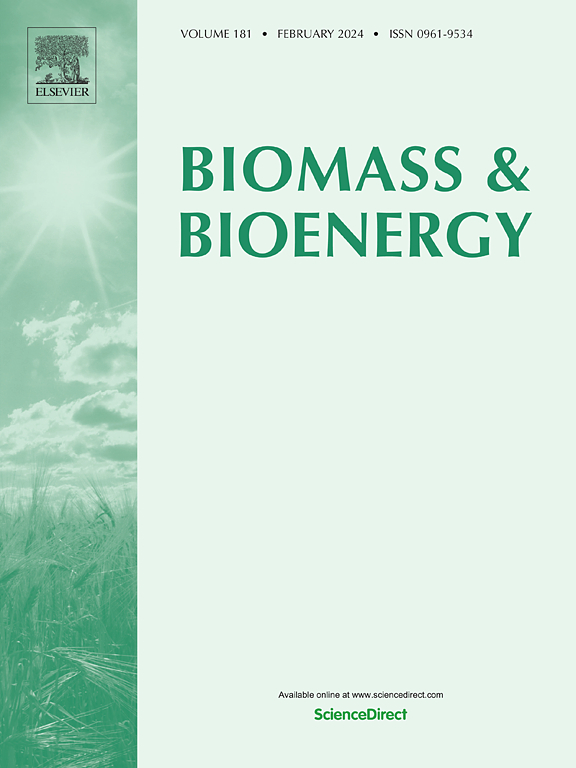Catalytic conversion of biomass components and waste biomass for hydrogen/syngas production using biochar catalysts
IF 5.8
2区 生物学
Q1 AGRICULTURAL ENGINEERING
引用次数: 0
Abstract
Biochar produced from the pyrolysis of waste biomass (sawdust) was used as a catalyst in the two-stage, pyrolysis-catalytic steam reforming of biomass components and waste biomass in a two-stage fixed bed reactor. The thermal degradation characteristics of cellulose, hemicellulose and lignin as representative biomass components and waste biomass were determined by thermogravimetric analysis. In addition, potassium and calcium metal salts were added to a mixture of the three biomass components to investigate the effect of the alkali and alkaline earth metals on the process. The results showed that among the three main components, the pyrolysis-catalytic steam reforming of lignin produced the highest hydrogen and syngas yields in the presence of biochar catalyst. Mixing cellulose, hemicellulose and lignin produced a synergistic effect in the pyrolysis-catalytic steam reforming process, significantly promoting hydrogen release. Adding K and Ca metals to the biomass component mixture further increased the hydrogen and carbon monoxide yields. The product yield from pyrolysis-catalytic steam reforming of the waste biomass indicated that the process for real biomass is not a simple superposition of individual components, highlighting the complexity of real biomass systems. The proposed mechanism of pyrolysis catalytic steam reforming demonstrated the unique role of biochar, including its self-gasification, which significantly contributed to hydrogen and syngas production. This study not only underscores the synergistic effects in co-pyrolysis but also reveals the practical potential of biochar as a sacrificial catalyst for efficient hydrogen production.

求助全文
约1分钟内获得全文
求助全文
来源期刊

Biomass & Bioenergy
工程技术-能源与燃料
CiteScore
11.50
自引率
3.30%
发文量
258
审稿时长
60 days
期刊介绍:
Biomass & Bioenergy is an international journal publishing original research papers and short communications, review articles and case studies on biological resources, chemical and biological processes, and biomass products for new renewable sources of energy and materials.
The scope of the journal extends to the environmental, management and economic aspects of biomass and bioenergy.
Key areas covered by the journal:
• Biomass: sources, energy crop production processes, genetic improvements, composition. Please note that research on these biomass subjects must be linked directly to bioenergy generation.
• Biological Residues: residues/rests from agricultural production, forestry and plantations (palm, sugar etc), processing industries, and municipal sources (MSW). Papers on the use of biomass residues through innovative processes/technological novelty and/or consideration of feedstock/system sustainability (or unsustainability) are welcomed. However waste treatment processes and pollution control or mitigation which are only tangentially related to bioenergy are not in the scope of the journal, as they are more suited to publications in the environmental arena. Papers that describe conventional waste streams (ie well described in existing literature) that do not empirically address ''new'' added value from the process are not suitable for submission to the journal.
• Bioenergy Processes: fermentations, thermochemical conversions, liquid and gaseous fuels, and petrochemical substitutes
• Bioenergy Utilization: direct combustion, gasification, electricity production, chemical processes, and by-product remediation
• Biomass and the Environment: carbon cycle, the net energy efficiency of bioenergy systems, assessment of sustainability, and biodiversity issues.
 求助内容:
求助内容: 应助结果提醒方式:
应助结果提醒方式:


